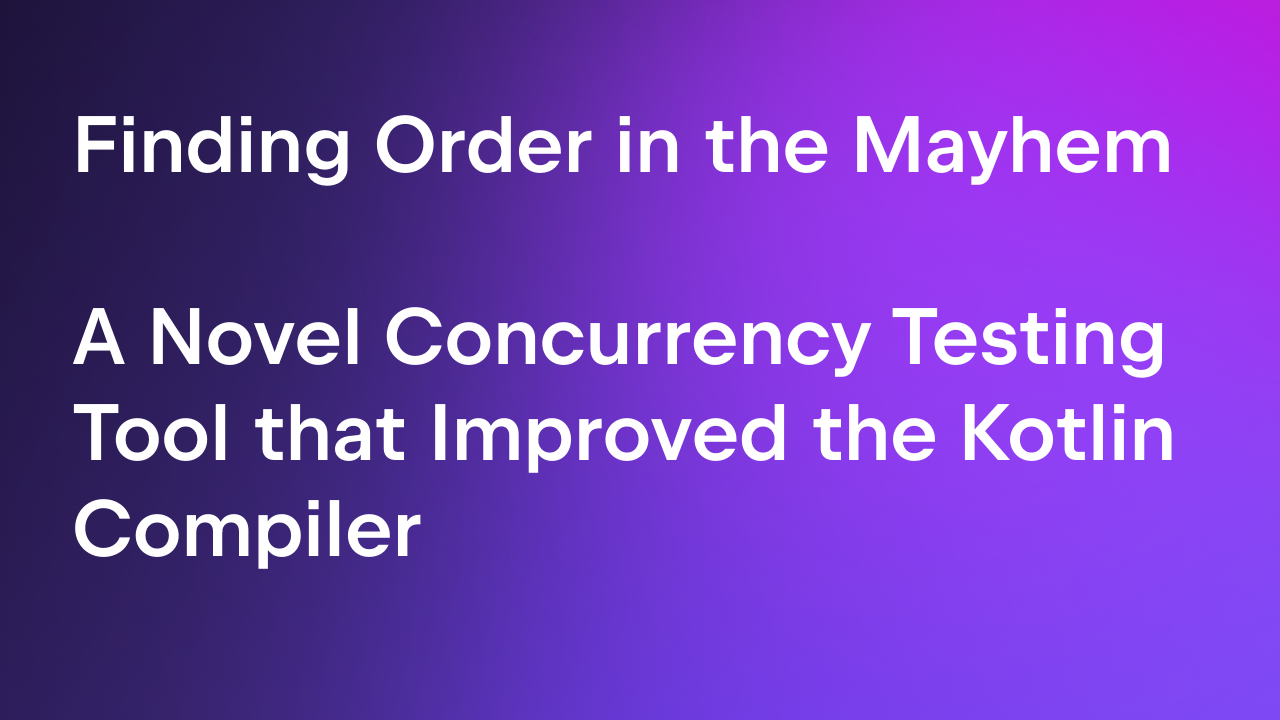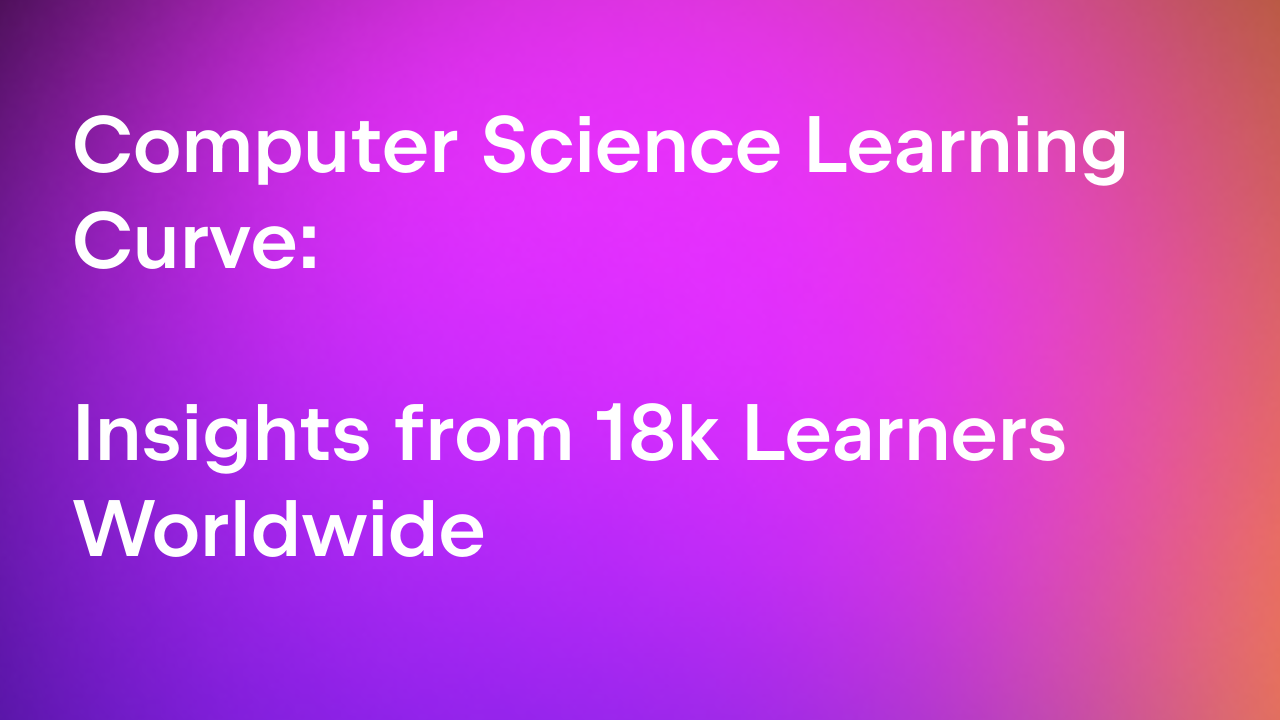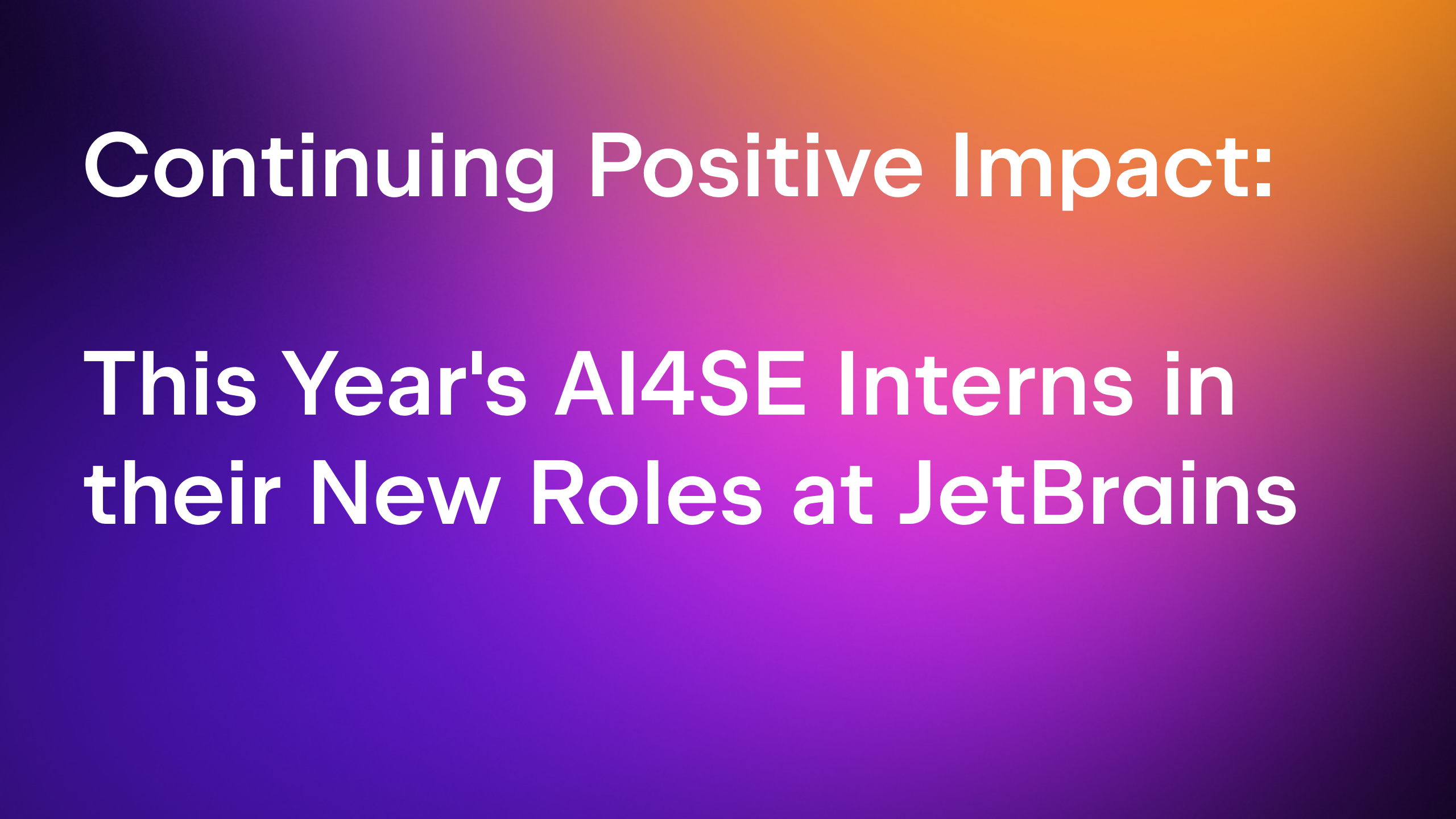JetBrains Research
Research is crucial for progress and innovation, which is why at JetBrains we are passionate about both scientific and market research
The State of Developer Ecosystem 2025: Coding in the Age of AI, New Productivity Metrics, and Changing Realities
Every year, the JetBrains Developer Ecosystem Survey takes a deep dive into the world of software development, looking at how developers work, what tools they use, and how the industry is changing.
The survey has been running since 2017 and has since grown into one of the most comprehensive studies of its kind.
The 2025 edition is based on responses from 24,534 developers across 194 countries, offering a truly global overview of the profession.
Let’s explore what stood out the most in 2025.
AI proficiency is becoming a core skill
AI is becoming a standard in developers’ lives: 85% of developers regularly use AI tools for coding and development, and 62% rely on at least one AI coding assistant, agent, or code editor.
Still, 15% of developers have not yet adopted AI tools in their daily work. Whether their hesitancy is due to skepticism, security concerns, or mere personal preference, this significant minority represents an interesting opposition to the mainstream trend.
AI at the workplace
For the majority who have embraced AI, the benefits are tangible. Nearly nine out of ten developers save at least an hour every week, and one in five saves eight hours or more. That’s the equivalent of an entire workday!
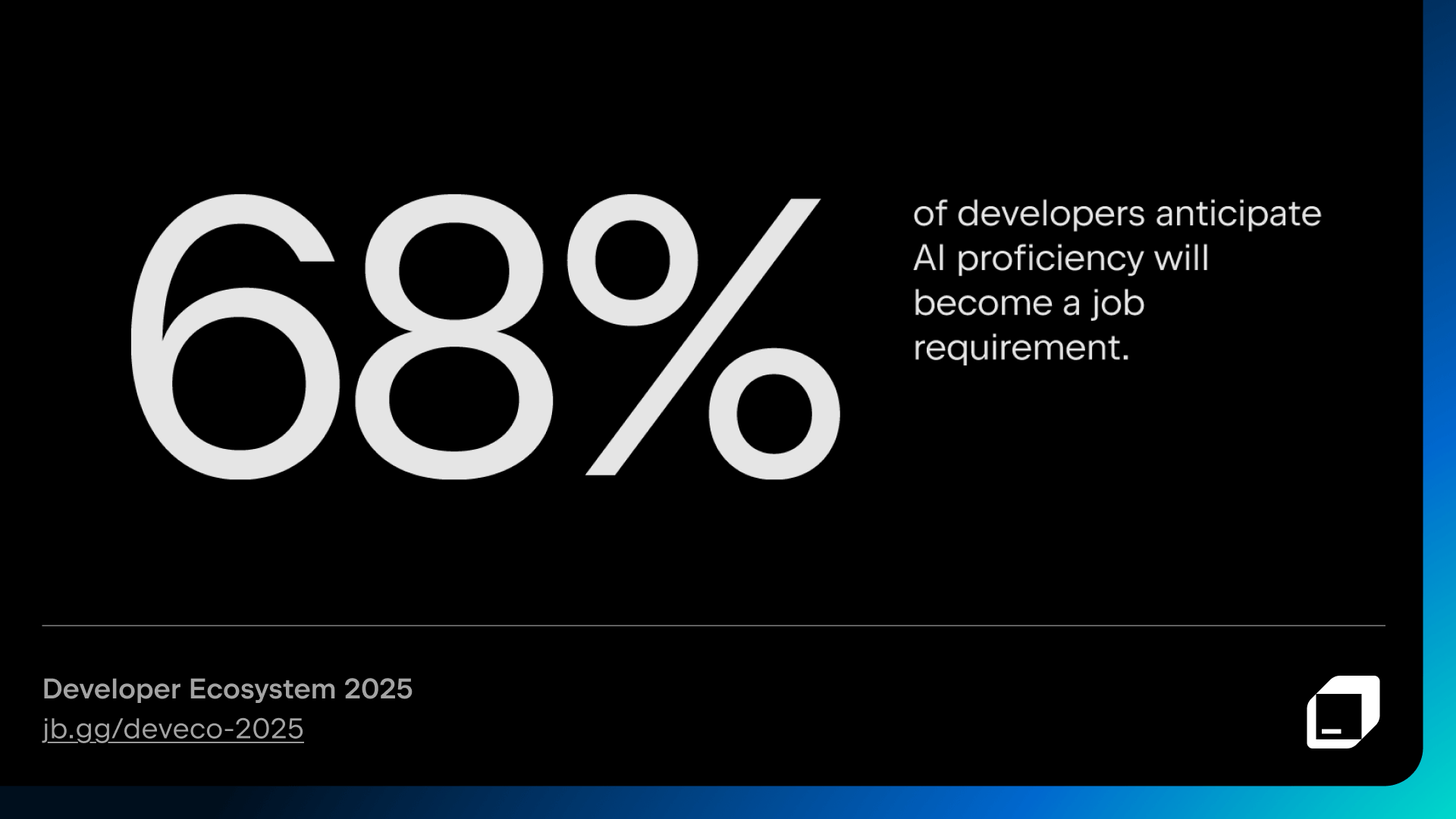
There’s no wonder 68% expect employers to require proficiency in AI tools in the near future. AI work has already become as common as data processing (25% vs. 29%).
Looking to the future
When asked about the increasing role of AI in society, developers express a mix of optimism, curiosity, and anxiety.
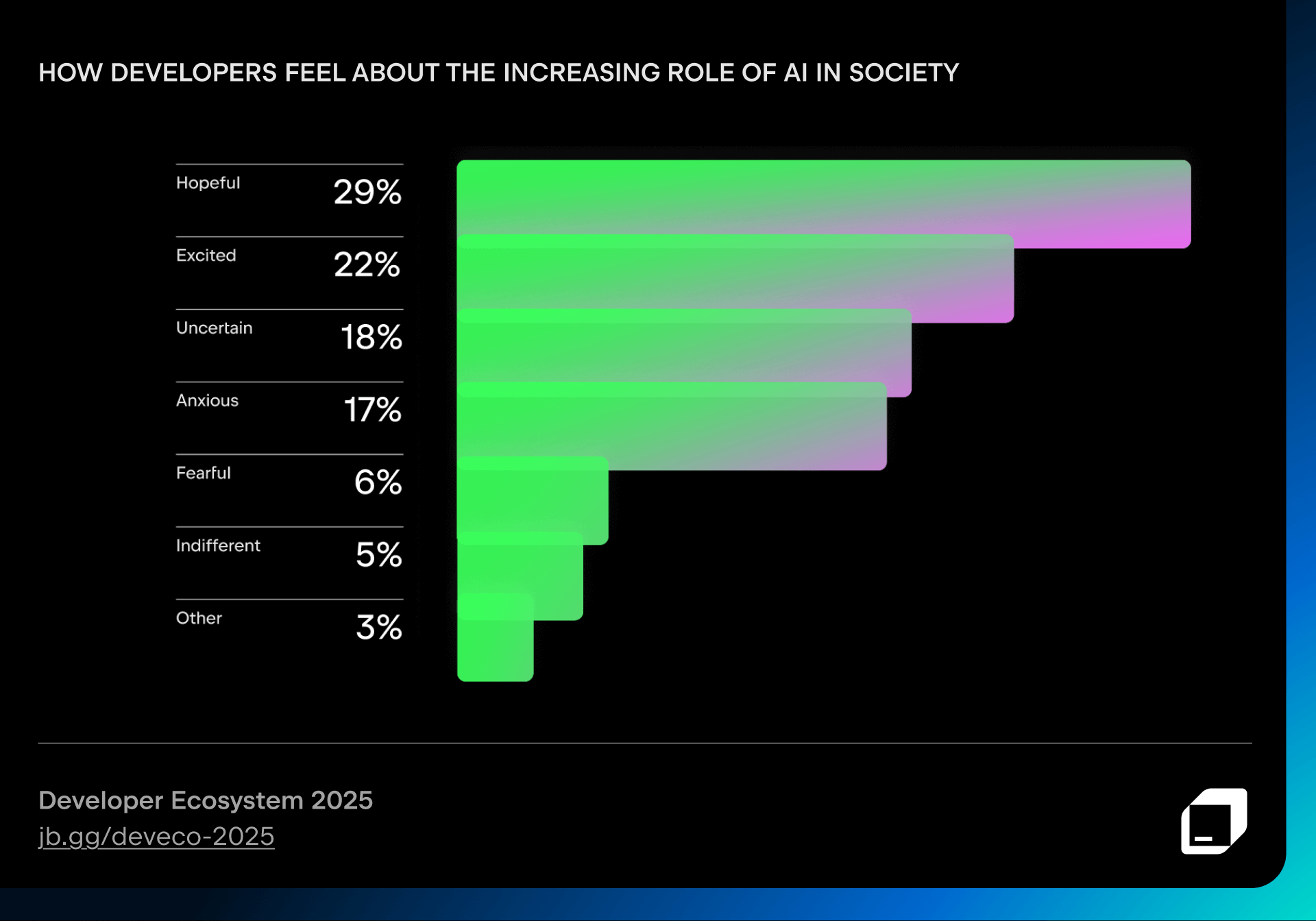
Most developers are happy to let AI handle repetitive tasks, such as generating boilerplate code, writing documentation, or summarizing changes, but they prefer to stay in charge of creative and complex tasks, like debugging or designing application logic.
Here are the top five development activities that respondents are most likely to delegate to AI:
- Writing boilerplate, repetitive code
- Searching for development-related information on the internet
- Converting code to other languages
- Writing code comments or code documentation
- Summarizing recent code changes
Biggest concerns around AI in coding and software development
Despite the enthusiasm surrounding AI, many people still have reservations. Here are the top five concerns our respondents reported having about AI in software development:
- The inconsistent quality of AI-generated code
- AI tools’ limited understanding of complex code and logic
- Privacy and security risks
- The potential negative impact on their own coding and development skills
- AI’s lack of context awareness
Languages and tools
The programming languages that developers choose reveal the state of the industry and which technologies are gaining traction now.
TypeScript has seen the most dramatic rise in real-world usage over the past five years. Rust, Go, and Kotlin have also continued to steadily amass market share – although their gains have not been quite as impressive as TypeScript’s.
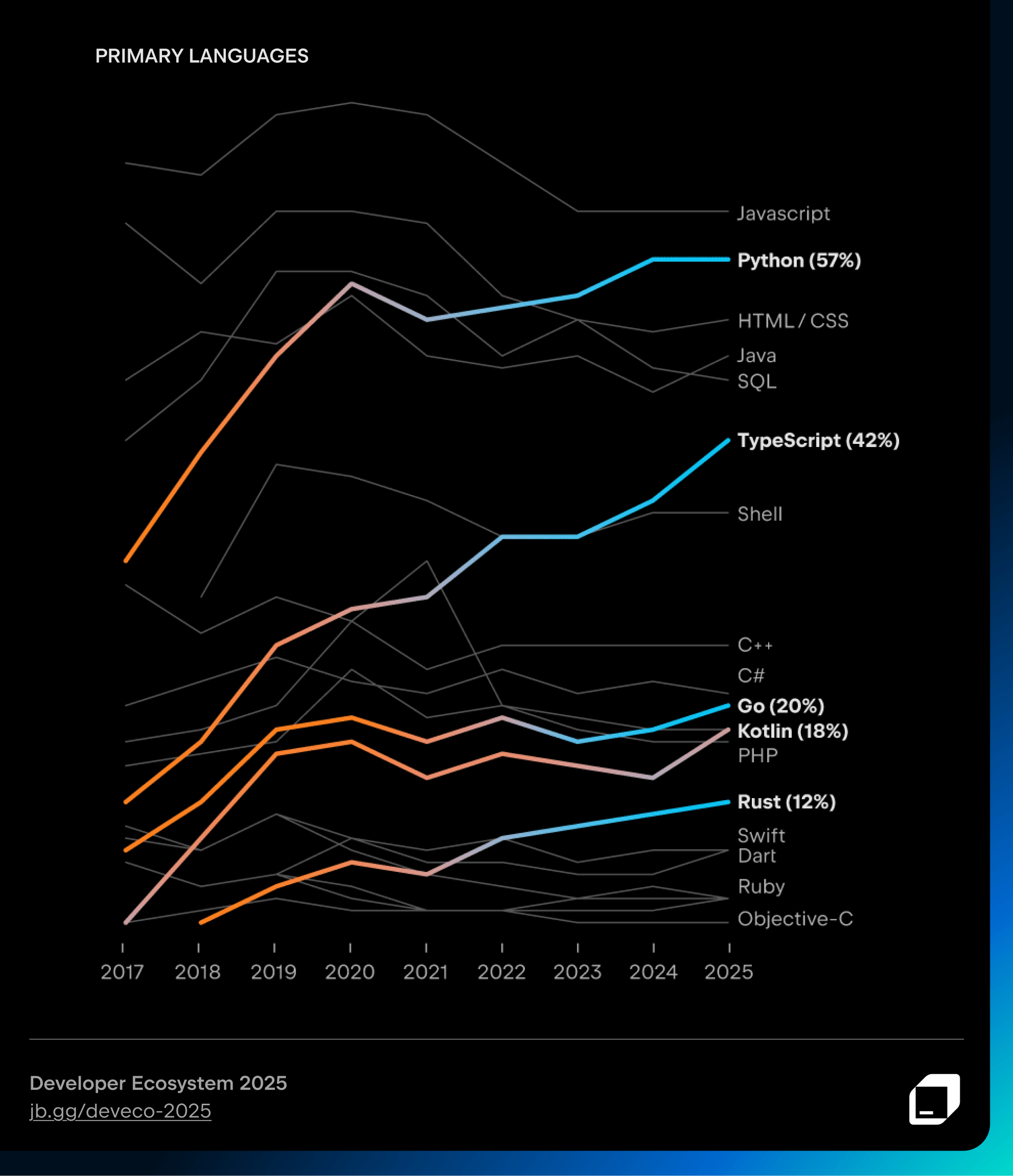
Meanwhile, PHP, Ruby, and Objective-C continue to decline steadily, reflecting how developer preferences and project demands have shifted over time.
The JetBrains Language Promise Index ranks languages based on growth, stability, and developers’ willingness to adopt them. According to the index, in 2025, TypeScript, Rust, and Go boast the highest perceived growth potential, while JavaScript, PHP, and SQL appear to have reached their maturity plateau.
The top five languages that developers want to adopt next are:
- Go (11%)
- Rust (10%)
- Python (7%)
- Kotlin (6%)
- TypeScript (6%)
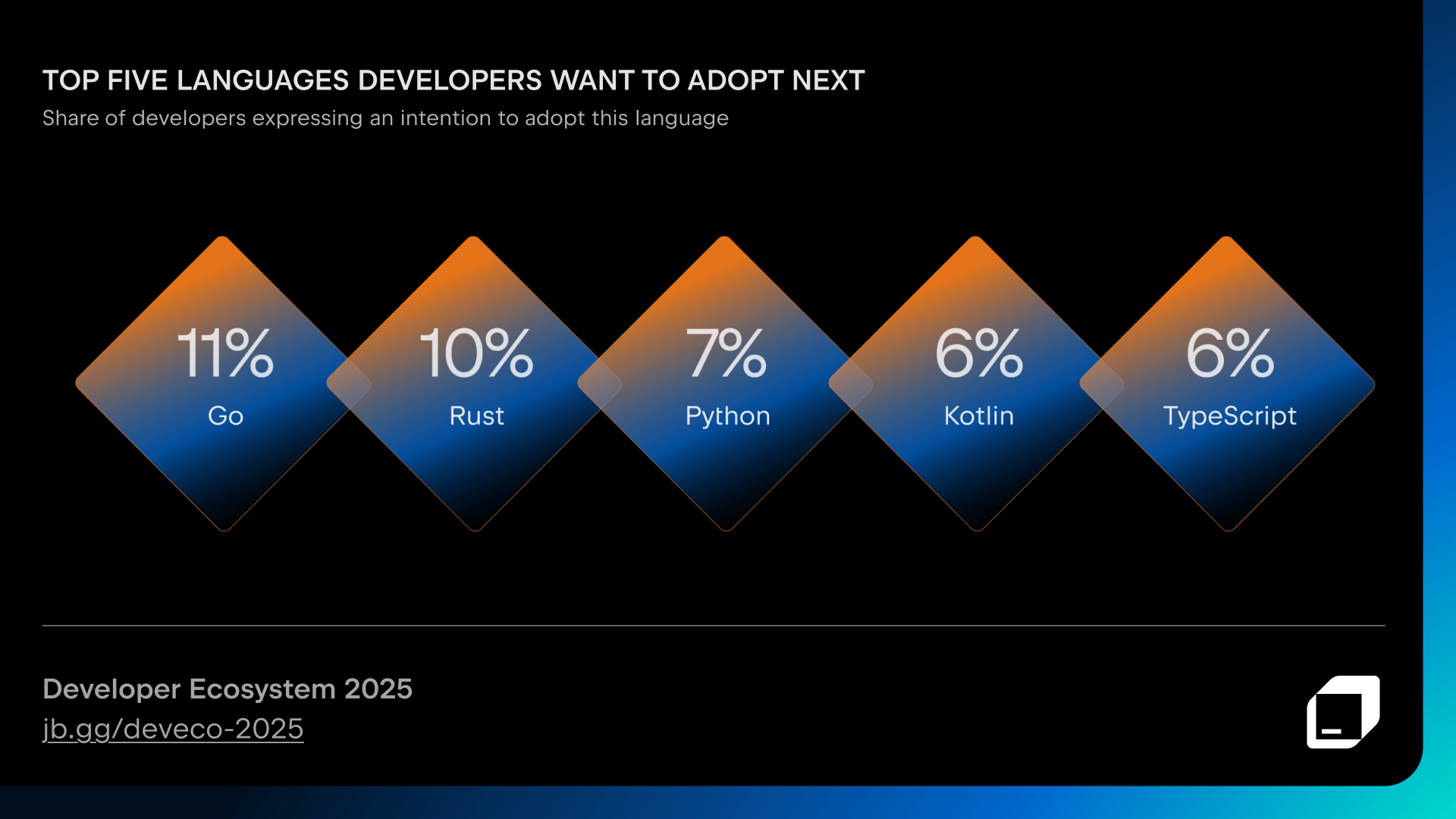
Surprisingly, Scala leads among the top-paid developers with 38%, despite being used by only 2% of all developers as a primary language. Sometimes, it seems, niche expertise quite literally pays off. You can explore this phenomenon in more detail with our IT Salary Calculator.
In the world of cloud services, regional providers maintain a strong presence in their home countries, showing that developers often choose cloud providers based on where they work or what’s most available in their region.
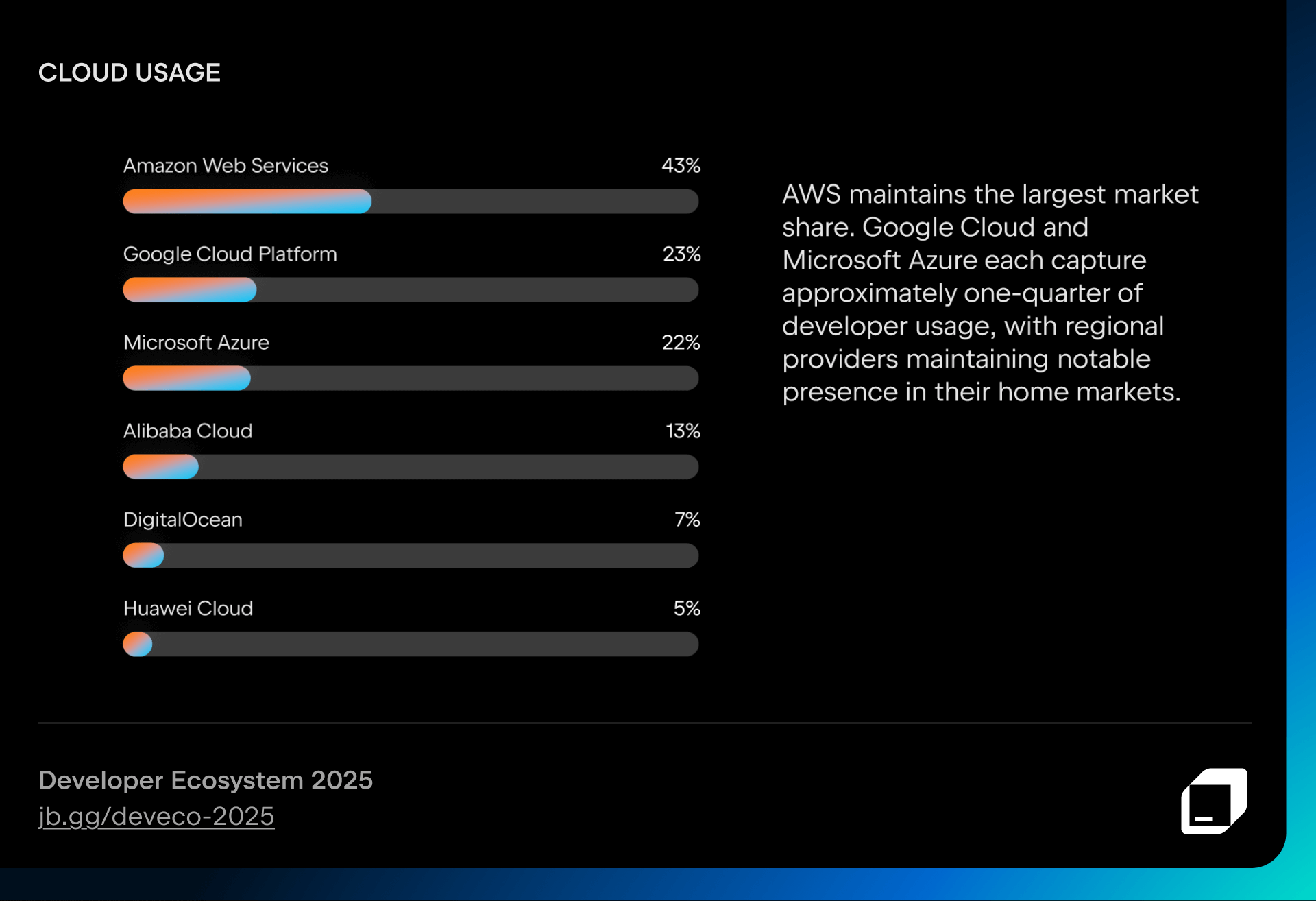
Developer productivity: Rethinking what it means to be productive
Last year, companies focused almost exclusively on measuring technical performance – build time, velocity, and mean time to recovery.
In 2025, we have seen a major rebalancing. It’s no longer about DORA metrics – it’s developer productivity that now matters most.
Developers themselves highlight both technical (51%) and non-technical (62%) factors as critical to their performance. Internal collaboration, communication, and clarity are now just as important as faster CI pipelines or better IDEs.
While tech decision-makers dream of reducing technical debt and improving collaboration, developers want transparency, constructive feedback, and clarity of goals. Yet, 66% of developers don’t believe current metrics reflect their true contributions.
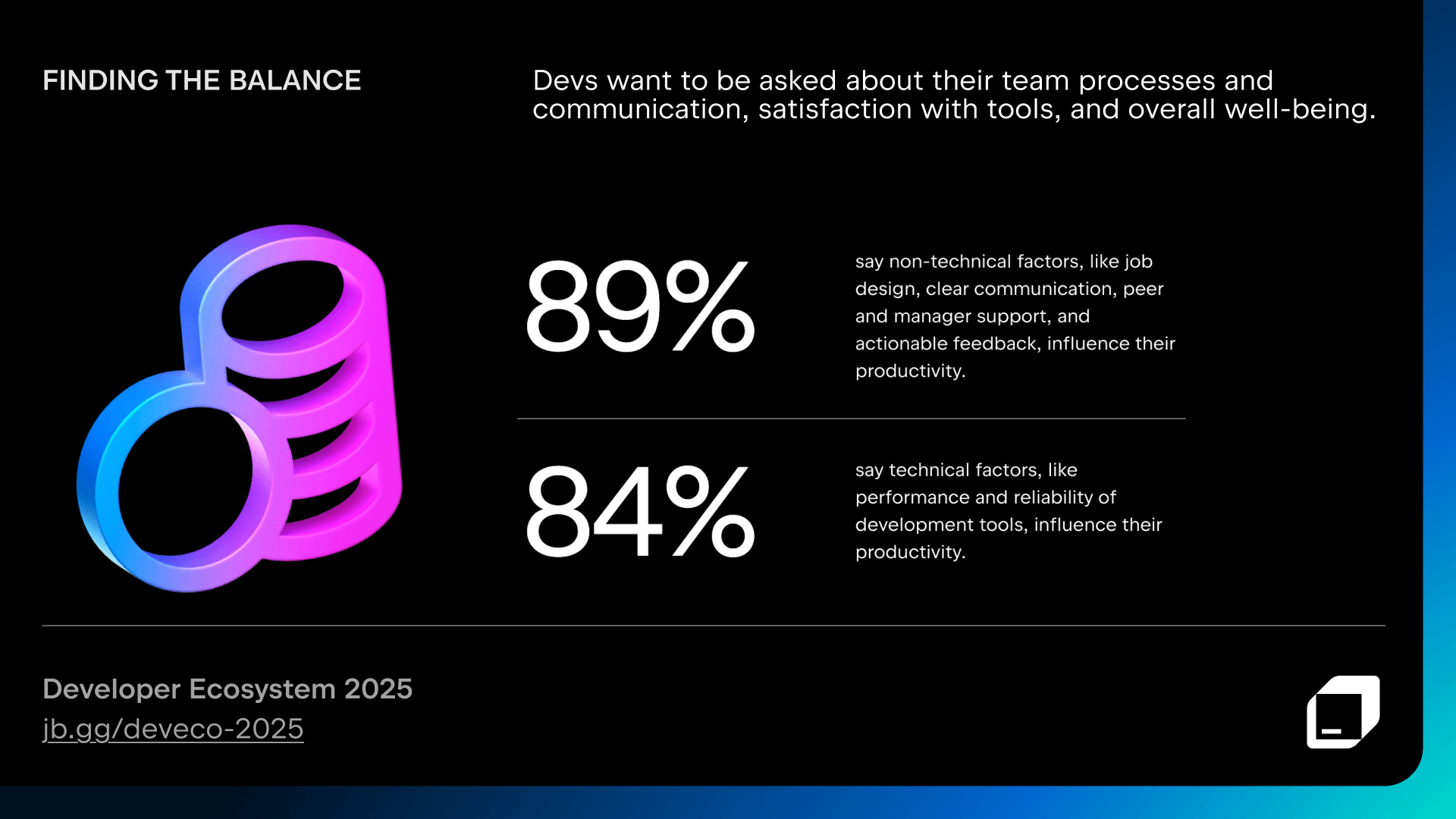
The data suggests it’s time to rethink how we measure success and to build work environments that reward not just results, but the way they’re achieved.
For more on how teams are reimagining productivity and developer experience, explore The State of Developer Experience and Productivity 2025 by JetBrains.
Developer reality
Every developer’s work tells its own story, and the data highlights just how diverse those stories can be.
Globally, developers experience the job market in strikingly different ways: 57% describe it as “favorable” in Japan, while 66% find it “challenging” in Canada. The industry may be global, but opportunity still depends on where you are.
61% of junior developers find the job market challenging, while 54% of senior developers share this concern.
As developers progress in their careers, they face entirely different types of challenges. The data shows a clear transformation from technical focus to coordination responsibilities, such as context switching, as experience increases.
Despite all the challenges, developers love what they do: 52% of developers code for fun even after coding all day. 57% prefer to do it while listening to music, while 25% enjoy the quiet.
And in one of the most delightful constants of this survey: Developers love cats just as much as dogs! ? ?
Methodology
The survey ran from April to June 2025 and included 24,534 developers after data cleaning. We balanced our responses by geography, employment, programming languages, and JetBrains product use.
Wrapping up
The Developer Ecosystem Survey 2025 results reveal a field that’s changing fast, shaped by AI and growing self-awareness among developers. They’re using tools that make them more productive, while questioning how they define productivity in the changing landscape.
Explore the full data and uncover your own insights using the Developer Ecosystem Data Playground. Check out the infographic for more insights about the current developer ecosystem.
Join the conversation
What surprised or excited you most about the findings? Share your thoughts on X or other social media platforms, mentioning @jetbrains and using the hashtag #DevEcosystem25. Your feedback helps us make our reports even more informative and useful.
Be part of the 2026 report
Want to contribute to next year’s Developer Ecosystem Survey? Join our JetBrains Tech Insights Lab! As a participant, you’ll engage in surveys, interviews, and UX studies that not only improve JetBrains products but also provide invaluable insights for the developer community. Plus, you can enter various prize draws and earn valuable rewards.
Let’s navigate the ever-changing tech landscape together. See you in the 2026 edition!
Subscribe to JetBrains Research blog updates


